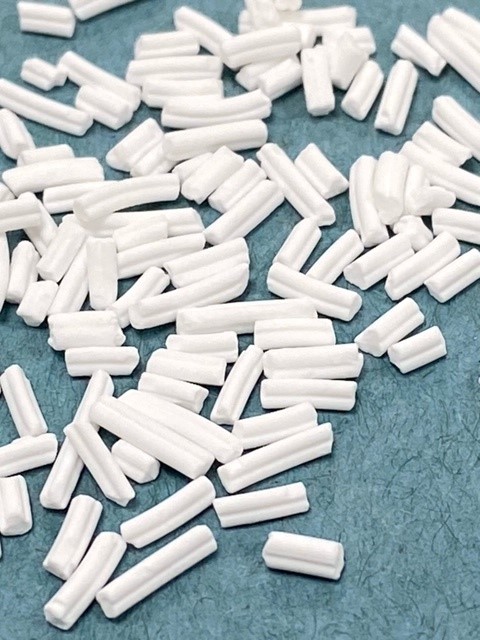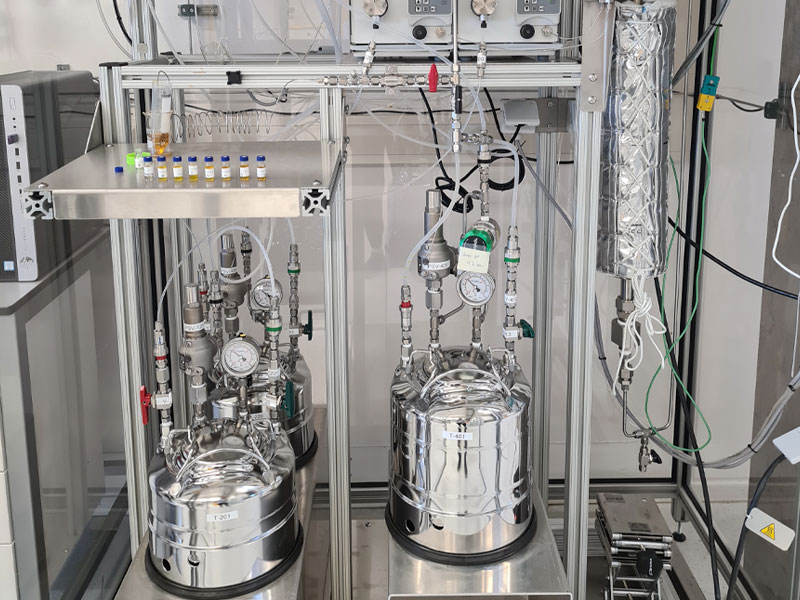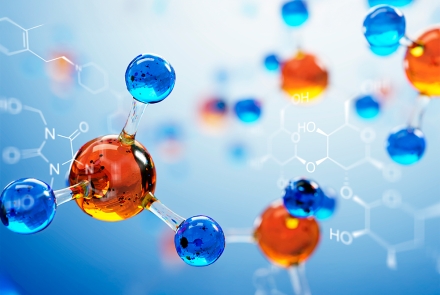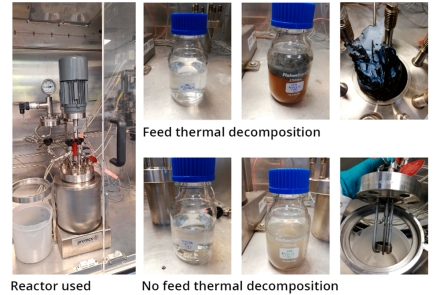Design of a catalytic process for the condensation of furfural and bio-based oxygenates
Bio-oxygenates are organic compounds derived from renewable biological sources and are often used as alternatives to fossil-based chemicals and fuels. Bio-oxygenates such as alcohols and ketones are widely used for fuels in transportation, additives in gasoline and diesel, and in a variety of other sectors such as the production of solvents, plastics, and other chemicals.
HIGFLY’s approach to the catalytic condensation process includes two different routes: a low temperature process at liquid phase evaluated at TNO, and a high temperature process at gas phase evaluated at Fraunhofer UMSICHT. Johnson Matthey screened several basic and acidic solid catalysts and developed and provided formed structures of selected catalysts for further use in continuous reactors at TNO and Fraunhofer UMSICHT.

Liquid Phase
For the liquid phase process, formed catalysts were screened for continuous operation in a fixed bed reactor under reference conditions for the condensation of furfural and bio-oxygenates. The highest performing catalyst, based upon stability, degree of activity, condensation selectivity, regeneration, and product yield, was identified and marked for further testing. The effects of operational conditions were evaluated, including reaction temperature, space velocity and feed makeup. Variations of the feed makeup included type of ketone in reaction with furfural, total reactant concentration or throughput, and molar ratio of furfural to ketone. From these experiments, operational conditions to maximise yields of larger condensation products were identified.
Gas Phase
The experimental approach for the gas phase catalytic condensation showed both limitations and opportunities. The gas phase condensation of ketones and furfural showed that polymerisation of furfural occurred during evaporation, making it impossible to use a feed mixture containing furfural. Other available bio-oxygenates from the HIGFLY process were considered and commercial catalysts provided by Johnson Matthey were tested for self-condensation. A metal-doped alumina catalyst was the most promising material for the gas phase condensation because of its higher stability over a varying range of temperatures. A metal with unique electronic and chemical properties, when added to a catalyst material, can increase the number of active sites, and improve the interaction between the catalyst and the reactants which can lead to faster reaction rates and higher yields of the desired product.
Further Research
The obtained results show promise in providing a flexible range of hydrocarbon intermediates (C8-C15) that can be upgraded to jet fuel molecules with suitable boiling range, freezing point, or flashpoint. Follow-up activities will focus on the upgrading of the formed intermediates through hydrotreatment and validation of stable processing conditions for the key synthesis steps.







